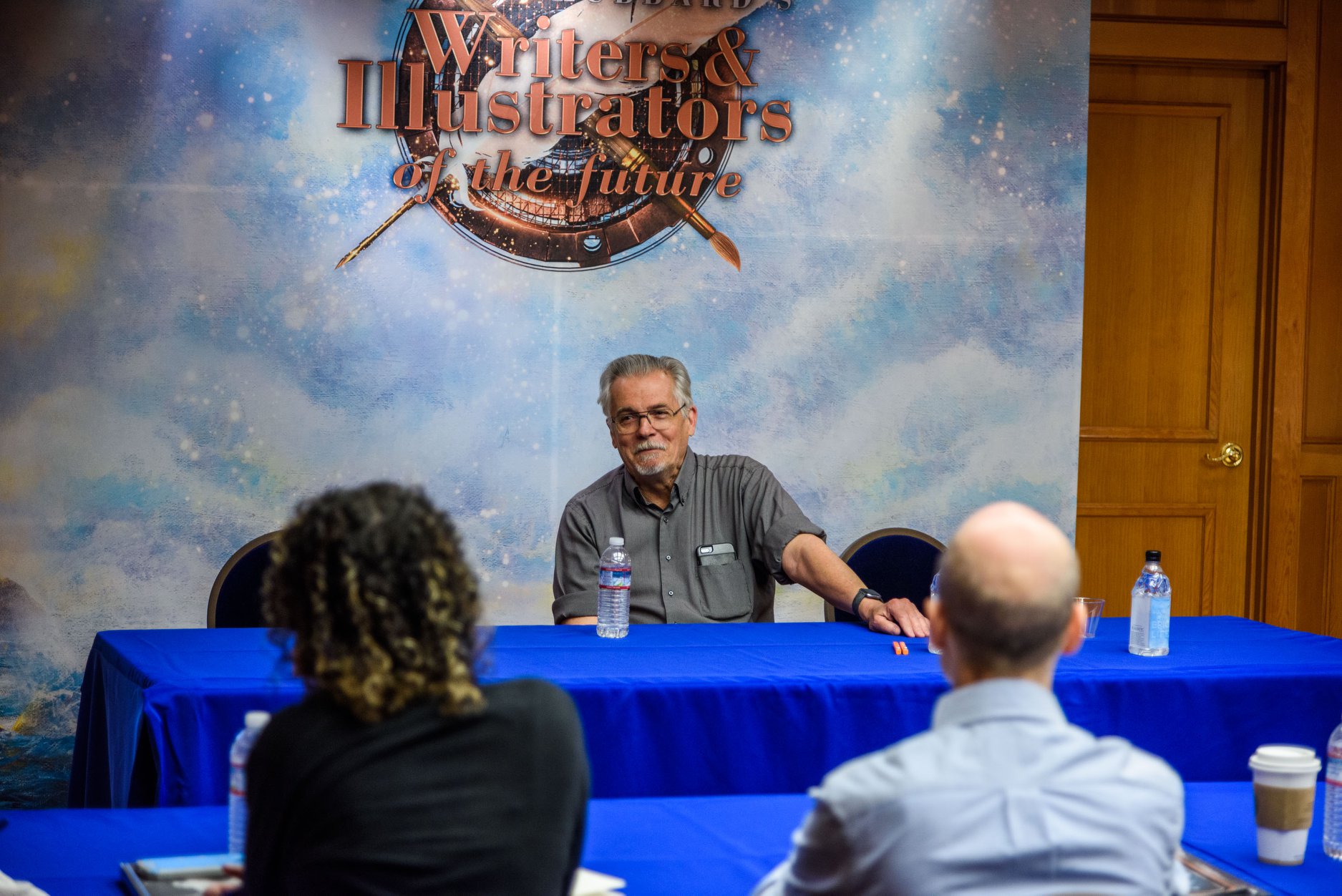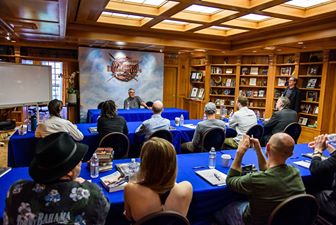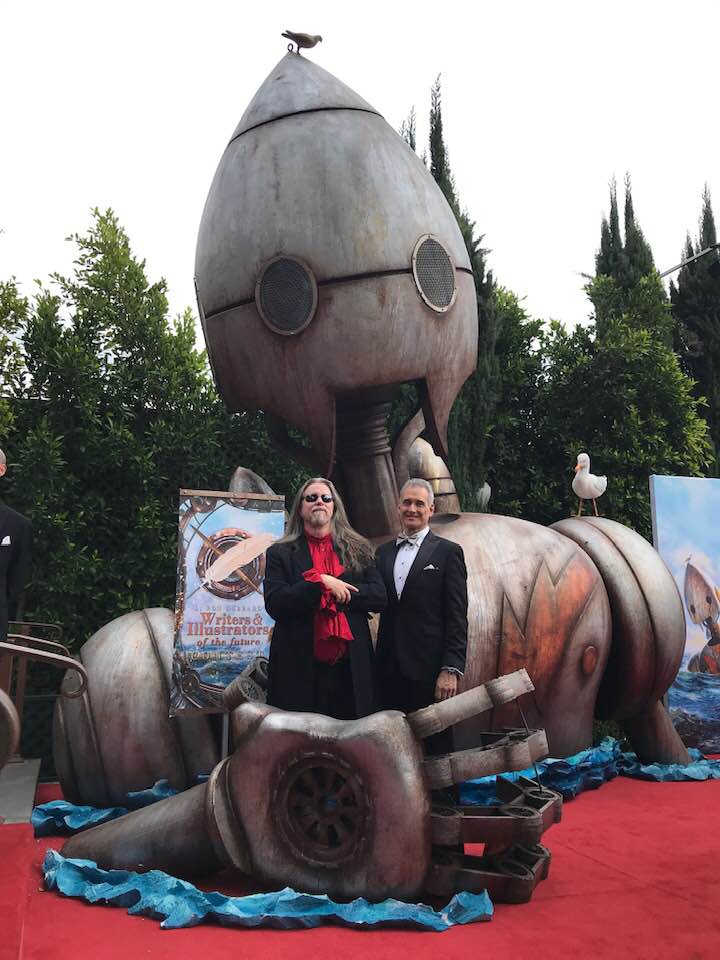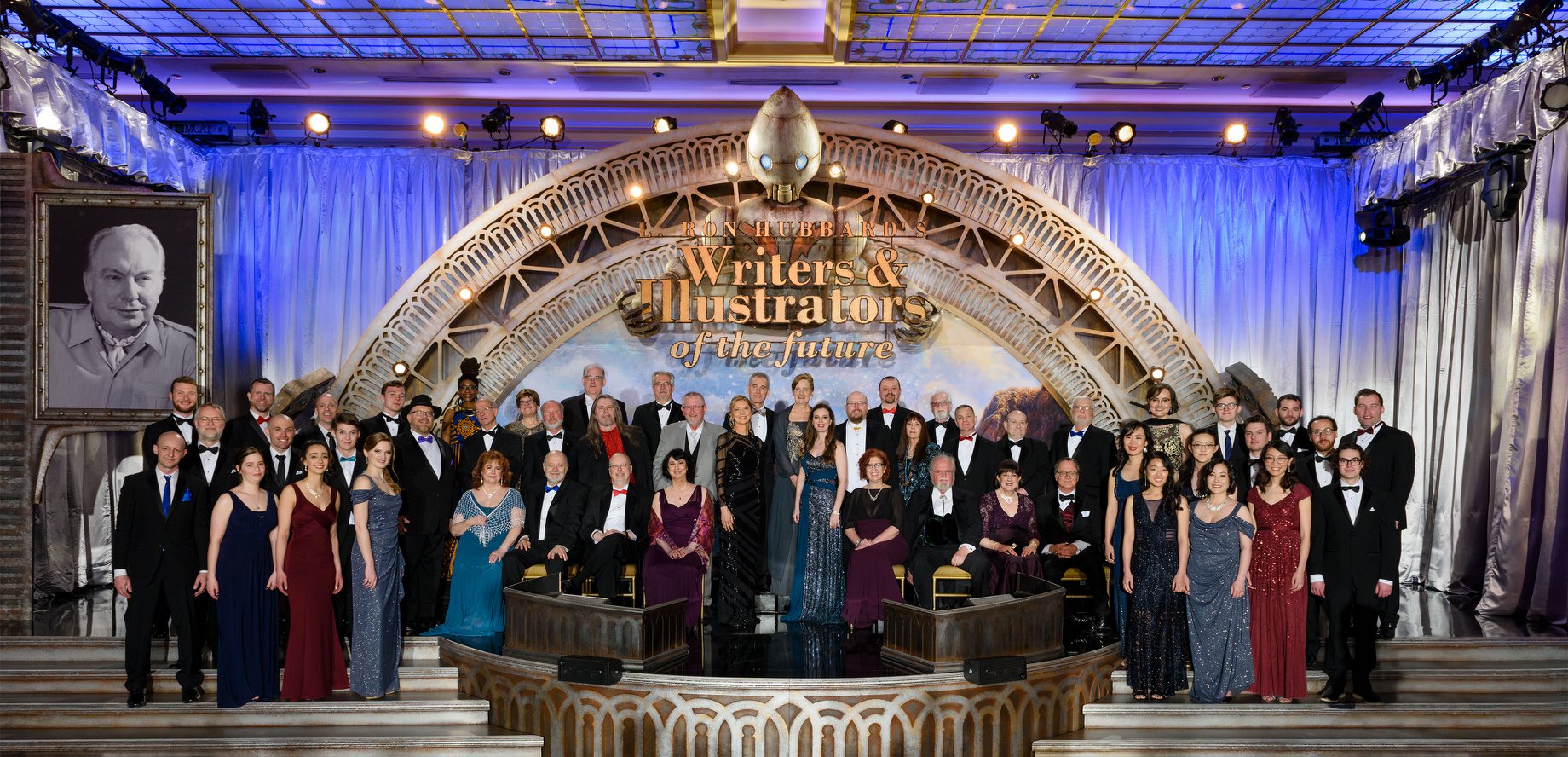Never Give Up
Much Harder to Say Than Do…
But this week at the Writers of the Future I heard a lot of fantastic stories about success because the writer just kept pounding the markets.
I remember that when I started out. From 1974 until 1982, stories out, no sales. And then I started following Heinlein’s Rules and sales started. First year I sold six short stories. (One to Writers of the Future.)
But I wrote 44 and had them all in the mail. All the time.
If a manuscript was rejected, I sent it back out often within hours.
So rejection was a way of life. I put all the rejections in big scrap books, the form rejections, the nice letters, and a few really nasty letters as well. I wrote 43 stories the next year and had all of them, plus all the ones from the previous year still in the mail. Sold about seven more.
I kept every story in the mail. Sold one on the 22nd time out for 10 cents per word after 21 rejections. I have been rejected by Asimov’s Fiction Magazine exactly 250 times. Rejections from all four of the editors that have been there since the magazine started.
I wrote the short story “In the Shade of the Slowboat Man” for an invite anthology and the editor said it didn’t fit and rejected it and it now is my bestselling story ever and was on the Nebular ballot and has been optioned numbers of times for movies.
I know rejection and how little it really means. But most new writers do not understand that.
So it felt wonderful this last week to be around new writers who had pounded the Writers of the Future contest every quarter, sometimes for years before breaking through. No one likes rejections, but there were no whiners that I heard complaining how they couldn’t write because they were afraid of rejection. In fact, it was the other way around. For some reason, the rejections kept this group of writers working and learning and submitting more and more.
An impressive bunch of writers and I wish I could have gotten to know them better before they all scattered out to the winds.
Here’s are some pictures of me talking with the writers one day. And a picture below that of John Goodwin and Bob Eggleton standing in the hand of the robot from Bob’s painting. I got to write the story around the painting. Story is in the book. I have a great picture of me and Larry Elmore in that same grasp. Wonderful fun.
Bottom picture, almost too small to see is of all the winners and judges for both contests. I am standing beside Todd McCaffery in the back row, right behind and between Bob Eggleton and Orson Scott Card.




3 Comments
Sean McLachlan
In the indie world, rejection has taken on a new meaning. You don’t get rejected, you just get very few sales. What I realized right from the start was that it was going to be a long job building up a book list and gathering a core of fans.
It’s still a long job, but sales have increased every year since I got serious five years ago and the books have also landed me several ghostwriting gigs, where I am paid well to play in other people’s worlds. Now I write fiction full time for a decent income.
I’m having heaps of fun and yes, it’s still frustrating that I’m not selling more, but I sure am selling more than those who wrote one book or ten or twenty and gave up. Their careers are over. Mine is just beginning.
Harvey
Great post and great pics, Dean. Thanks again for all you do.
For my part, I had a really great visit over the past few days with an old USMC friend I last saw in 1974. Weird (and flat wonderful) how physical bodies and even interests change, but attitudes and spirits never do.
My buddy “Corky” and I fancied ourselves whiskey afficionados, pretty good pool players, and were young enough to get ourselves into (and out of) situations I wouldn’t attempt today.
That’s the advantage of growing older, I think: Not the ability to ‘relive’ old times, but that we can revisit them again and share them with others.
Corky and his wife left this morning. Now it’s back to the present and on to my next novel.
Lawrence P. McGuire
Dean,
Thank you for today’s blog post. Usually I don’t leave comments on blogs. Enough people do that already. But today you illuminated what rejection looks like even for established professionals, such as yourself.
It’s one thing to hear an established pro say, “I still get rejected, too.” It’s another thing to see a pro’s rejection stats. Many of us imagine a pro getting a rejection one out of a hundred stories, or maybe one out of fifty. But to read about your experience with Asimov’s Science Fiction magazine opened my mind to the eternal nature of the rough reality that is rejection.
Perhaps a few writers will print out this particular blog post, frame it, and display it close to their writing space to remind themselves on weeks when they receive two or three rejections that they have not yet begun to write.
Thanks again, Dean.